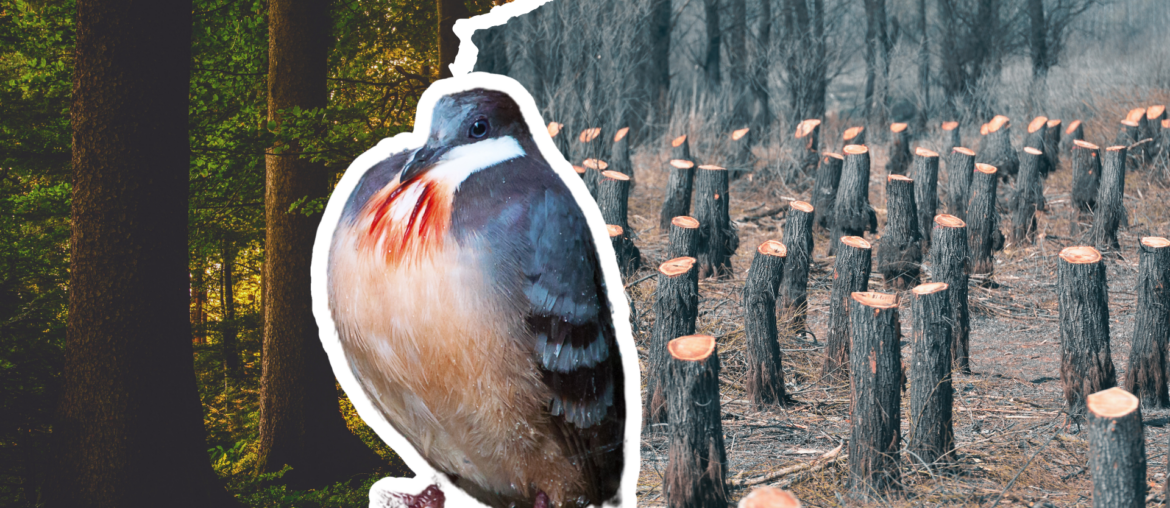One of the 6 endemic species protected by the DENR due to its diminishing population.

The Negros Bleeding Heart Pigeon (Gallicolumba keayi) is found only in the island of Negros. It is known for its unique appearance and colorful feathers where its chest has a red patch that resembles a bleeding heart.
A Dwindling Population

The Department of Environment and Natural Resources (DENR) has prioritized the protection of the Negros Bleeding Heart Pigeon due to the severe threat posed by habitat loss. As deforestation and land conversion for agriculture and development continue to take over the island of Negros, the pigeon’s critical living and breeding grounds are being lost. This rapid reduction in habitat has led to a significant decline in the species’ population, making urgent conservation efforts important to protect its survival.
8 Facts About the Bleeding Heart

In response to the urgent need for action, conservationists and the DENR are strategizing to save this remarkable bird. Aside from habitat restoration efforts, they are aiming to educate the public about its relevance and attributes. So, here are a few facts about the Negros Bleeding Heart Pigeon:
- The Only One – No other pigeon possesses the bleeding heart mark on its chest, making this species a one of a kind and very distinct.
- Camouflage Experts – Despite its bright chest marking, the pigeon’s feathers blend remarkably well with its forest habitat, helping it stay hidden from predators.
- Queens of Hush – Unlike many other pigeons, the Negros Bleeding Heart Pigeon is known for being quiet and elusive, often avoiding human contact.
- Low Reproduction Rate – This pigeon has a low reproductive rate, which means that even small disruptions in its habitat can have a significant impact on its population.
- Fruit Eaters – The diet of the Negros Bleeding Heart Pigeon primarily consists of fruits and seeds, which it forages from the forest floor and low vegetation.
- Courtship Rituals – During courtship, males perform an intricate display to attract females, including puffing out their chest and making soft cooing sounds.
- Short-Distance Flyers – This pigeon is not known for long flights; it prefers short, quick bursts to move between feeding areas and nesting sites.
- Cultural Significance – In local folklore, the pigeon is sometimes considered a symbol of love and fidelity, which adds a layer of cultural importance to its conservation.
So, let us all help in restoring what once these pigeons and other species lost from the behavior of irresponsible humans.



Comments are closed.